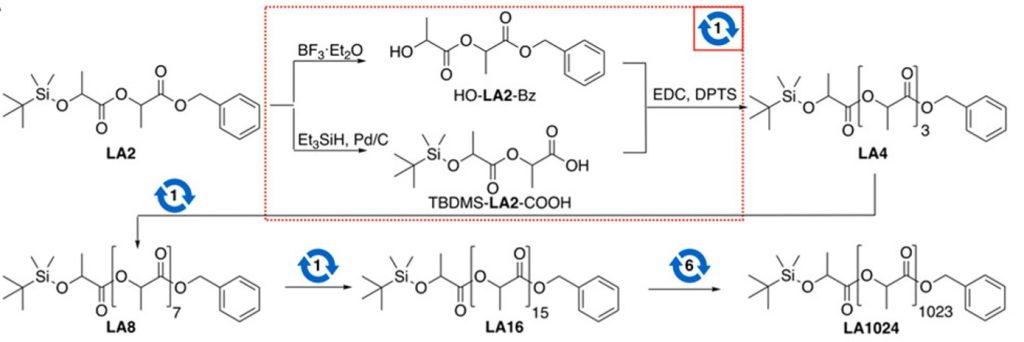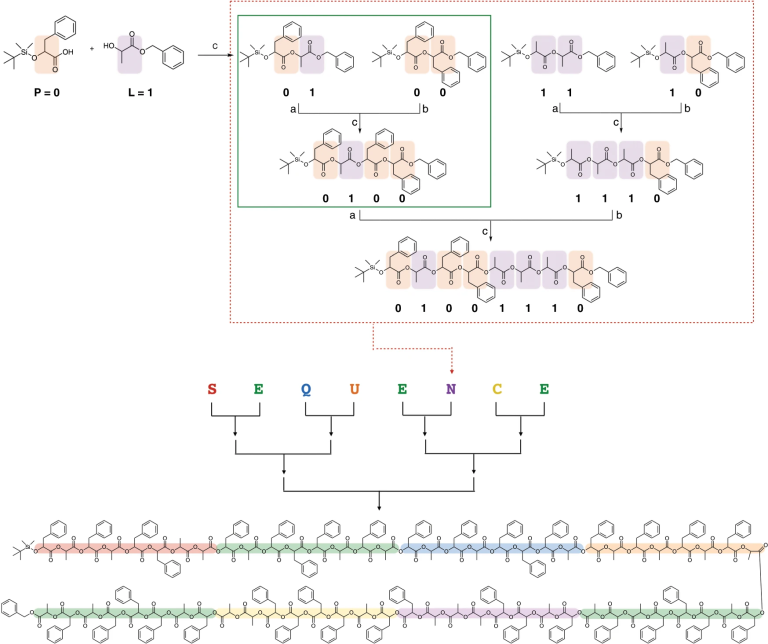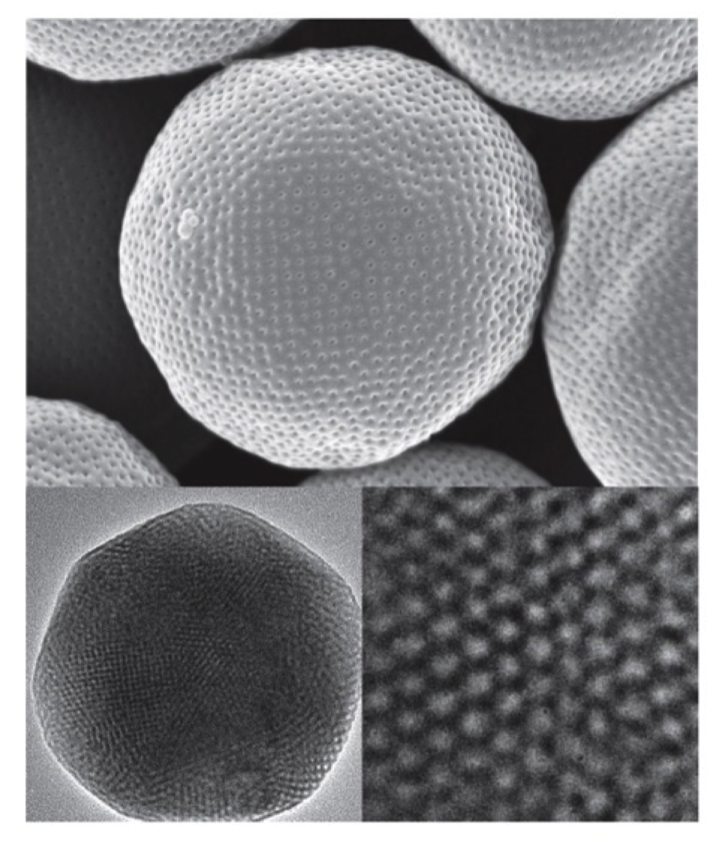Current Research Topics
Our research is centered on synthetic organic and polymer chemistry to synthesize new polymers, block copolymers, and organic materials for biomaterials, and optical-electronic materials. Also, we are keenly interested in understanding the structure-property relationships of polymers and block copolymers in terms of their self-assembly behavior in solution. Our ultimate goal is to understand how to make synthetic polymers that equal to the structural definition of biopolymers such as proteins and nucleic acids.
Information-encoded polymers
Overcoming the randomness and dispersity
Most synthetic polymers suffer from randomness in their chemical composition and molecular weight distribution (dispersity), due to statistical nature of the polymerization process. Therefore, special strategies are required to encode information into polymer like their natural counterparts such as DNA or polypeptides. Our goal is to synthesize monodisperse (having no dispersity) and sequence-controlled polymers that can be used as an information storage medium.

Synthesis of monodisperse poly(lactic acid) (PLA)
Monodisperse poly(lactic acid) (PLA) was synthesized by iterative exponential growth and protection/deprotection method. One of our goals is to identify the effect of dispersity on the physical properties of polymers by comparing monodisperse and disperse polymers.


Synthesis of monodisperse PLA (left) and their mass spectra showing the lack of dispersity (right)
Synthesis of sequence-encoded polymers
Our group is working on the synthesis of PLA-derived sequence-encoded polymer. Synthetic sequence-controlled polymer is expected to cost less to synthesize compared to DNA which is currently used as an information storage medium.

Constructing complex nanostructures
Amphiphilic diblock copolymer building blocks
Amphiphilic diblock copolymers consist of two distinct polymer blocks, one hydrophilic and one hydrophobic block. They serve as building blocks to form complex nanostructures through self-assembly process. Our group’s research interests include constructing complex nanostructures such as colloidal inverse bicontinuous cubic membranes.

Construction of complex polymeric nanostructure



Cubosome-templated synthesis of photonics crystals

